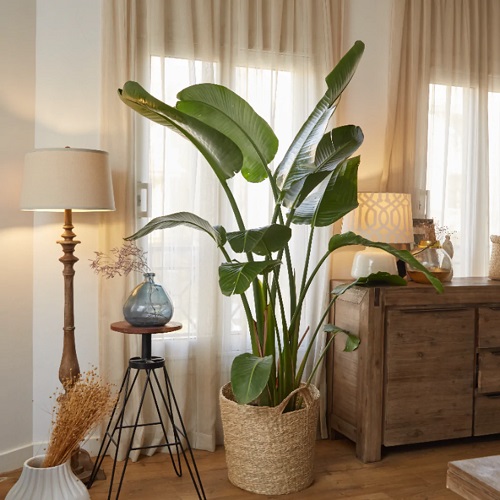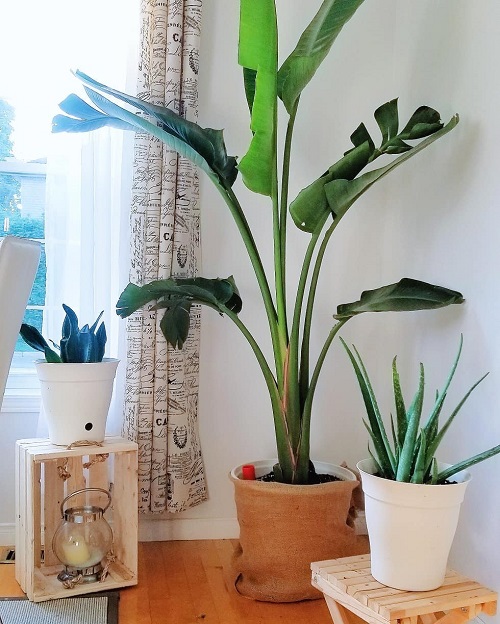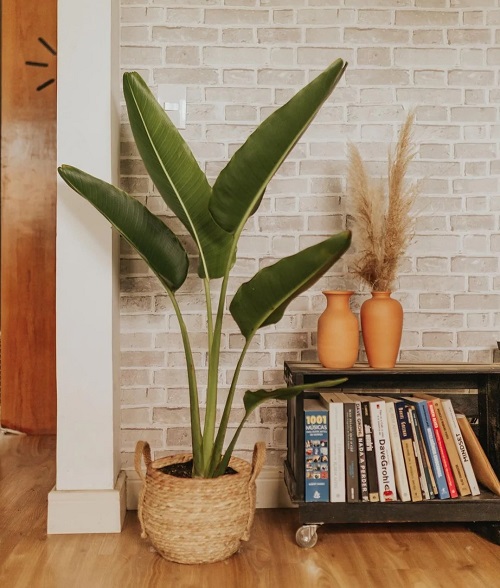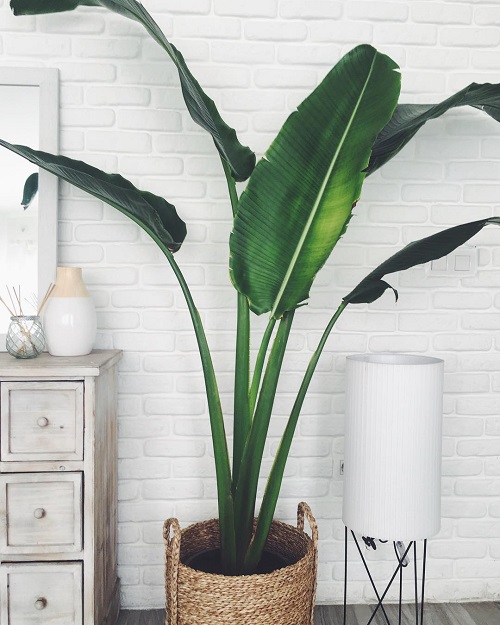Ravenala madagascariensis creates a statement with its long, banana-like foliage. Here’s everything about Travelers Palm Indoor care!

Native to Madagascar, Travelers Palm got its unique name due to the large sheath-like foliage that holds rainwater and satiates any passerby’s thirst in an emergency. It belongs to the Strelitziaceae bird-of-paradise family and is not a real palm. If you are looking for a tropical houseplant to grace your indoors, head on to this Travelers Palm Indoor care guide!
- Botanical Name: Ravenala madagascariensis
- Goes by the names Traveler’s Palm, Pokok Travelers, Traveller’s Tree, and Pisang Kipas
- Prefers a warm, humid environment
- Perfect for bringing tropical vibes indoors
- Secondary Rainforest, Grassland, Savannah, and Scrubland are some natural habitats of this plant
- Toxic to humans and pets
TRAVELERS PALM INFORMATION
Noted for its large, banana-like foliage, Travelers Palm is a tall plant that reaches a considerable height in its native environment but can be trained as a houseplant indoors. The fan-like leaves reach a length of about 10-12 inches, sometimes even more, indoors, making it to the list of the best big-leaf houseplants you can try!
Interestingly, the plant has cupped bases at each leaf which can hold about a quart of rainwater for passers-by to quench their thirst. Travelers Palm is a slow grower and will take around a decade to bloom. This plant comes with edible seeds, which makes it useful beyond being an ornamental plant.
IDEAL POT SIZE FOR TRAVELERS’ PALM
The giant stature of Ravenala madagascariensis calls for a 14-16 inches tall container while starting out. If you have enough space to accommodate a big Travelers Palm, keep repotting the plant to 1-2 size bigger containers every two years.
Get a sturdy container of cement, concrete, or terracotta to match the colossal of this amazing plant.
PROPAGATING TRAVELERS PALM

The quickest and most popular method to propagate this plant is to locate rooted suckers, which grow near the main stem. When you see the Travelers Palm exceeding the planter size, take the plant out gently from the planter and detangle the root ball. It might be a challenging task, but ensure not to hurt the foliage in the process.
Separate the offsets from the mother plant; use a sterilized knife if required. The next step is to plant the sucker in a well-draining, moist medium. To cut down the hassle of transplanting, get a big pot and watch your Travelers Palm thrive indoors.
Tip: The ideal time to follow this process is at the beginning of the rainy season.
REQUIREMENTS FOR GROWING TRAVELERS PALM Indoor

Soil
Travelers Palm grows best in rich and loamy soil with mild acidity. The medium must be moist but not waterlogged. Ensure that the soil contains lots of organic matter such as coco coir and perlite or vermiculite to boost drainage.
Light
Traveller’s palm prefers indirect sunlight in the earlier stage, gradually requiring more light as it matures. It is a plant that will thrive close to bright, sunny windows once established. Place your palm less than 1ft from a south-facing window for the best growth.
Temperature and Humidity
This palm has a narrower temperature tolerance and grows well in USDA zones 10 to 11. The temperatures dipping below 15 degrees celsius are bad for its growth and will damage the plant. Traveller’s Palm cannot tolerate anything below 5 degrees celsius and can die under such conditions. The optimal temperature range is 65-85 F or 18-29 C.
This plant needs high humidity indoors. Keep a humidifier handy for the drier days.
Water
While growing Travelers Palm indoors, ensure the medium is evenly moist but not soggy. Keep an eye on the top 1-2 inches and water whenever it dries out. Ensure the soil doesn’t stay dry for long.
Traveler’s Palm Indoor Care

Fertilizer
Feed the Ravenala madagascariensis with a slow-release fertilizer once a month during the summer and rainy seasons. It is recommended to add a nitrogen-rich fertilizer which will result in a healthier and faster-growing Palm.
Pest and Disease
Traveler’s palm does not fall prey to many pests or diseases. Still, it has been known to host Colletotrichum gloeosporioides and is susceptible to various forms of leaf spot and root rot. Spider mites have also been seen to infest this tree.
Pruning
This plant can be pruned once in a while to make it look neat and control its spread. Use a sharp tool to prune because if your cutting tools are dull, they will shred your Traveler’s Palm inducing fungal issues.






